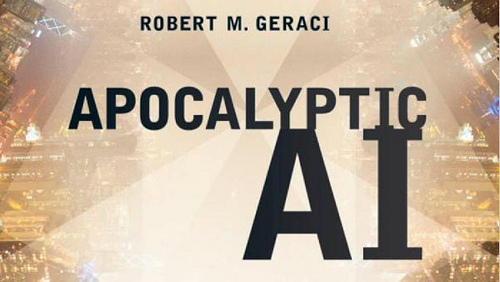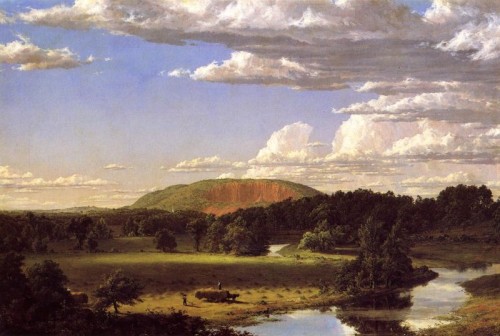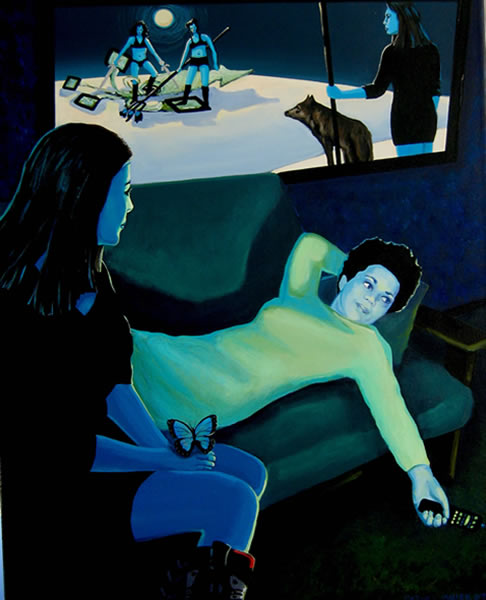 This review was written for robots.net
This review was written for robots.net
Get ready for the four robots of the apocalypse as we review a book that should be close to the hearts of robots.net readers – because you actually helped research it: Robert M. Geraci’s “Apocalyptic AI: Visions of Heaven in Robotics, Artificial Intelligence, and Virtual Reality“. Geraci, a professor of religion and researcher of all things eschatological, notes that,
“excepting rapture theologians of fundamentalist Christianity, popular science authors in robotics and artificial intelligence have become the most influential spokespeople for apocalyptic theology in the Western World.”
You heard that right, roboticists and AI researchers have risen to second place when it comes to who we think of when the topic is apocalyptic theology. And with fundamentalists blowing two more apocalyptic predictions since the book was published, who knows, we may be number 1 now. But how can robots and AI be theology? Read on for a full review of Geraci’s book.
Title: Apocalyptic AI – Visions of Heaven in Robotics, Artificial Intelligence, and Virtual Reality
Author: Robert M. Geraci
ISBN Number: 978-0-19-539302-6
Publisher: Oxford University Press
Number of pages: 221
List of chapters:
Introduction
1 Apocalyptic AI
2 Laboratory Apocalypse
3 Transcending Reality
4 “Immaterial” Impact of the Apocalypse
5 The Integration of Religion, Science, and Technology
Appendix One: The Rise of the Robots
Appendix Two: In the Defense of Robotics
Notes
Reference
Index
If you’ve been reading Robots.net for a few years, you may remember the Robots and Religion survey we posted about in late 2007. The survey was created by Robert M Geraci, who was an assistant professor of religion at Manhattan College and a visiting researcher at CMU at the time. The survey generated a lot of discussion and interest among our readers. Robert was conducting the survey to gather information for a book – this book! Apocalyptic AI came out in 2010 and has been working its way up my book review queue since then. I finally got a chance to read it recently. It’s an interesting book and definitely worth reading. And it’s cool to read a book that so many of our readers helped make possible (there’s even a small note in the book thanking robots.net readers for your participation). In addition to talking to robot builders here, Robert also did ethnographic research inside the virtual worlds of Second Life and World of Warcraft. And he spent a good deal of time talking to leading researchers in AI and Robotics.
Religion abounds with apocalyptic theology. People love that sort of thing. A lot. So much so that it creeps into areas of our life that you wouldn’t expect. Robert Geraci noticed that popular books on AI and robotics were espousing what amounted to a thinly veiled copy of Jewish/Christian apocalyptic theology. I’ll assume not all robot builders are up on their theology, so what is apocalypticism? It’s the belief that we live in a world of good and evil; that humans are a mix of both, leading to some type of alienation and the need to be “purified”; that a catastrophic event is coming within our lifetime that will destroy the world as we currently understand it, destroying the evil components of some or all humans, leaving the purified good humans to transcend into a new existence of eternal happiness. The study of this coming apocalypse and purification is called Eschatology. Even if you’re not religious, you’re probably thinking I’ve just described the plot of many a science fiction story. The idea of an apocalypse is one of the ideas that Carl Jung called an archetype and Joseph Campbell identified as universal in the myths and stories of the world.
What Geraci realized is that this theme has cropped up in the best selling pop science writings of robotics and AI visionaries like Ray Kurzweil, Hans Moravec, Kevin Warwick, and Hugo de Garis. These people have helped shape an apocalyptic theology. First there’s the dualism of good and evil. In apocalyptic AI, Geraci sums up good and evil this way: “On one side stand mind, machine, and virtual reality. On the other stand body, biology, and the physical world”. It’s the evil of our imperfect biological bodies that prevent our minds from achieving what they could. The physical world we live in limits our lifetime. Our bodies become frail, old, sick, and eventually we die. In order to achieve what we desire, the apocalyptic writers say, humans must somehow purify themselves, shedding their biological, physical contamination and merge with machines that will remove the limitations of slow thinking, sickness, and death. How will this come about? Through an apocalypse that’s coming in our lifetime known as the Technological Singularity. Initially it will heal damage bodies with prosthetics and extend our physical lives. Eventually the singularity will give eternal life and in some cases even raise our dead to be with us again. Eventually it will destroy the world as we know it and set our minds free as we ascend into a mind-machine existence that transcends physical reality.
While apocalyptic theology occurs in nearly ever religion, Geraci goes into detail primarily on Jewish and Christian versions of the apocalypse, presumably because those will be the most familiar to readers in the Western World. He talks about the cultural and social issues that made apocalyptic theology attractive at the time in history when each group adopted an apocalyptic world view. He identifies similar social forces at work in today’s world influencing the Apocalyptic AI trend. Geraci describes a bit of Apocalyptic AI history, tracing its origin to science fiction, but his real quest is to find out what impact apocalyptic AI theology is having out in the real world. It’s not his goal to prove Apocalyptic AI theology as true or false, merely to understand where it came from and what effect it’s having. In particular he notes how readily accepted it is by those already involved in precursors to virtual reality – what we know as MMORPGs. He cites studies in which a surprising number of participants in Second Life and World of Warcraft would choose to upload their minds into their chosen virtual world and discard their physical bodies today if it were possible.
The widespread dissemination of Apocalyptic AI theology has increased awareness of the importance of AI and robotics research, increased funding for research, and given higher social status to the authors of apocalyptic pop science books. But beyond those immediate effects, Apocalyptic AI has led to philosophical, legal, and theological dialogs at every level of our society. From debates in online discussion forums, to debates about international treaties concerning AI and robotics research, Apocalyptic AI has brought the importance of dealing with the results of robotics research to the top of everyone’s list. To the extent that robotics and AI research appears to be proceeding along the path predicted by Apocalyptic AI theology, the subject is perceived as more important to address quickly. If the Technological Singularity or other aspects of Apocalyptic AI turn out to be unlikely, as many believe may be the case, its importance may diminish.
Geraci also describes some of the response to the integration of religion and technology that Apocalyptic AI represents. Some see it as harmless or no more important that the presence of apocalyptic ideas in science fiction. Others see it as extremely dangerous. The recent recasting of Biblical creationism as “Intelligent Design” is given as one of the most effective examples of trying to mix religion with technology, resulting in something that is “almost certainly poor science and misguided theology”. It’s speculated that Apocalyptic AI could lead to cultural controversy on par with that of Intelligent Design with school boards pressured to insert curriculum asserting the soullessness of machines.
Along the way Geraci explores a variety of amazingly interesting intersections between religion and robotics. He mentions many topics we’ve covered here on robots.net including the likeliness that intelligent, conscious robots would adopt religions views, the legal and ethical ramifications of conscious machines, even strange trivia: did you know some Christians believe progress in AI is what will trigger the Christian apocalypse? did you know some early Golem stories parallel modern science fiction accounts in which a newly created AI runs amok? Be sure to the read the extensive notes section at the back of the book, it’s almost as entertaining as the book itself! There are also two appendices, the first gives a brief history of robotics, the second is on the uneasy relationship between robot builders and researchers who largely seek to build peaceful robots and the primary funder of robot research, the US Government, who primarily seeks to build robots for military purposes.
Is the Singularity likely or just wishful thinking? Will we ever be able to build machines that are conscious? Will we ever be able to upload our minds into machines or live in eternal robot bodies or virtual realities? Transhumanism, augementationism, technism, immersionism, cybernetic totalism; is any of this good or bad? In the end it’s left to the reader to decide. Geraci is only the messenger.



